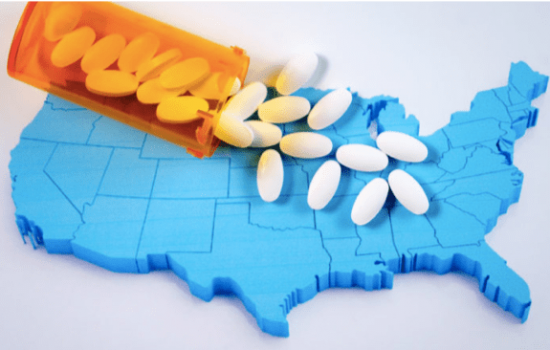Drug overdoses in the U.S. cause more deaths annually than gun violence and motor-vehicle collisions combined. In 2017 alone 70,237 Americans died from drug overdose, 67.8% of those deaths are specifically attributed to opioids.
Though we are in the midst of a public health crisis, there are possible solutions to reduce morbidity and mortality through Medication-Assisted Treatment (MAT) for Opioid Use Disorder (OUD). There are currently three Food and Drug Administration (FDA) approved medications to treat OUD: methadone, naltrexone, and buprenorphine. Methadone is an effective maintenance therapy treatment that has been in use since 1947, but it is only available in highly regulated and specialized clinics. Injectable naltrexone is a relatively new medication that requires the patient to fully withdrawal from opioids before starting treatment and more research is needed to determine its effectiveness. Approved in 2002, buprenorphine is a partial-opioid-agonist that some consider as the gold standard for treating OUD due to its high efficacy, decreased side effects, and low potential for misuse. Unlike methadone, buprenorphine can be prescribed and dispensed in practitioner offices, but there is a catch. While providers can freely prescribe opioids for pain management, a mechanism known as an X-Waiver is needed to prescribe buprenorphine. Doing away with this obstructive waiver could play a key role in combating the ongoing epidemic.
In 2000, Congress passed the Drug Addiction Treatment Act (DATA 2000), which allows “qualified physicians” to prescribe schedule III-V narcotic controlled substances for narcotic dependence through an X-Waiver, such as the schedule III medication buprenorphine. Under the act, a physician is required to take an 8-hour training course in order to apply for an X-Waiver granted by the Drug Enforcement Agency. Nurse practitioners (NP) and physician assistants (PA) were not allowed to prescribe buprenorphine until the passage of the Comprehensive Addiction and Recovery Act in 2016, this act implemented regulations which requires them to take 24-hours of training. After completion, a provider typically waits 60-90 days to receive their X-Waiver. With an X-Waiver, physicians can treat 30, 100, to 275 patients while NPs and PAs are limited to a maximum of 30. This well-intentioned waiver maintains a huge barrier to fighting the ongoing opioid epidemic while simultaneously vilifying a medication that can successfully treat OUD.

Photo courtesy of focusforhealth.org
The U.S. is not the first country to experience an opioid problem where buprenorphine is a solution. In 1995, France allowed all physicians to prescribe buprenorphine, barrier-free, leading to a 79% reduction in opioid overdose deaths, allowing 10 times as many persons with OUD to start MAT in just four years. According to the U.S. Surgeon General, “only 10% of [Americans] with a substance use disorder receive any type of specialty treatment.” Currently, there are only 69,500 practitioners with an X-Waiver while there are a total of 1,259,379 active physicians, NPs, and PAs meaning only 5.5% of providers in the entire nation are capable of prescribing buprenorphine. Buprenorphine has the potential to expand the treatment of OUD to many fields of practice including family and emergency medicine, instead of keeping it within the specialties of psychiatry and addiction medicine.
The nearly 20-year-old DATA 2000 provision is blocking a 17-year-old medication from helping us combat the third wave of the ongoing opioid epidemic. However, there is a solution. Representative Paul Tonko (NY D-20) introduced the Mainstreaming Addiction Treatment Act (MATA) on May 2, 2019, that would effectively repeal the X-Waiver requirement and currently has 76 cosponsors. Repealing the waiver would expand access to medication, help change the narrative about substance use disorders, and decrease stigma allowing more people to seek treatment. With an average of 130 Americans dying daily from opioids, it is long past time to repeal this outdated provision.



